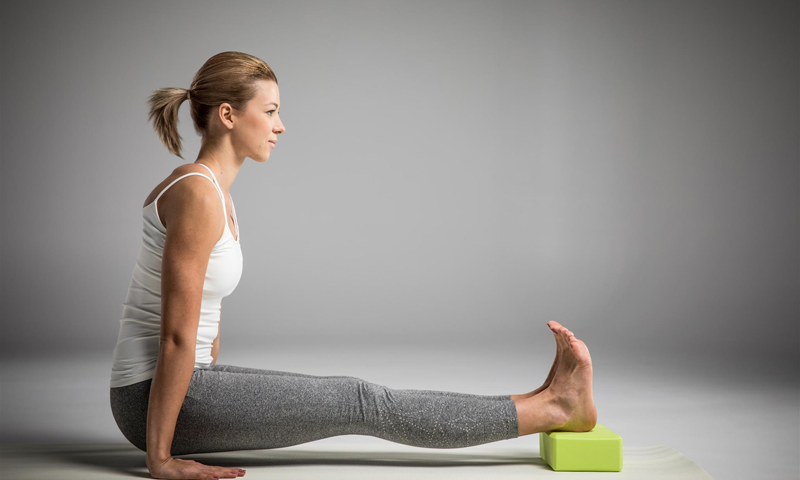
What is a Yoga Blanket? Everything You Need to Know
2nd August 2018
Ana Heart will be featured in Moda Operandi
6th August 2018How to Use Yoga Blocks and Bricks?

If you’re thinking about taking up yoga, you may be wondering what props to pick up. While each prop has its own benefits, a yoga block should be one of the first things you get your hands on. Turning up to class in some trendy yoga pants with a yoga brick in tow will show your instructor that you mean business! Yoga blocks are bricks can be useful to both beginners and experienced practitioners. For beginners, a block can be used to assist postures when the flexibility isn’t quite there. Experienced yogis, on the other hand, can use the block as support in more advanced postures. In this article, we explore how to use yoga blocks and bricks in more detail.
How to Use a Block or Brick
To Support Tight Joints
If you have tight hips or knees, a yoga block can make your practice a little easier. Sitting on a block during postures that require your bottom to be on the mat will allow you to complete the pose without straining the tight muscles. Men often find that their hips are tight – especially if they’re new to yoga. If your flexibility is limited, you may find it helpful to stack two blocks on top of each other instead of using just one. Raising your bottom off the floor will allow you to complete the posture without injuring yourself. Over time, it’s likely that your flexibility will increase and you will be able to remove one, or even both, of the blocks. Don’t feel embarrassed to use blocks or bricks, though, it doesn’t make you any less of a yogi than other practitioners. Even yoga instructors sometimes benefit from using props, so just do what feels right for your body.
To Assist Balance
You can also use a brick to assist your balance in standing asanas. Beginners often find standing hands-to-floor postures a little tricky, so many students incorporate a yoga block into the pose. Half Moon Pose is a standing posture that requires you to keep one hand on the mat, raise your leg parallel to the ground, and lift your opposite arm straight up above you. The complicated pose can be made easier by raising the floor level with a yoga brick.
To Add Extra Length
Many asanas require you to touch your toes. While experienced yogis can do this with ease, beginners may find it harder. A yoga block can be used to raise the floor level to make the stretch easier. Experienced practitioners can also benefit from using a block in these kinds of poses. Instead of placing the block in front of your feet to raise the floor level, stand on top of the block and attempt to touch the ground. As you can get blocks in a variety of sizes, choose a larger size and challenge yourself!
To Help With Alignment
A yoga brick can also be used to fine-tune your poses and help with alignment. In postures like Wheel Pose, it’s not uncommon for the legs to fall out to the sides. To prevent this, place a block in between your thighs to keep your legs correctly aligned throughout the stretch. The brick can also be used in simple poses to engage the leg muscles. This can help tone up the muscles, even if the asana doesn’t target them directly.
Poses That Use a Yoga Block

Forward-Fold
Practising Forward-Fold with a yoga block can help beginners to finish the pose, even if they’re not very flexible yet. To practice the asana, sit on the edge of your block with your legs out in front of you. Tilting your pelvis forward, bend at the waist and lower your upper body toward the mat. If you can’t quite touch your toes, don’t worry! Just rest your hands on your shins instead. You are in Forward-Fold. Hold the asana for 30 seconds whilst breathing deeply.
Pigeon Pose
If you have tight hips or knees, using a block for Pigeon Pose can be helpful. To practice the asana, start by kneeling on your mat. Stretch your left leg out behind you and place the yoga block under your bottom. When you’re ready, sit back on the edge of the block. The top of your left foot should now be resting on the mat. Tilt your pelvis forward and lower your upper body towards the floor. As you come forward, rest on your forearms and lower your head toward the ground. You are in Pigeon Pose. Hold the asana for 30 seconds, feeling the stretch through your hips and thighs.
Bridge Pose
Using a yoga block or brick in Bridge Pose will help to keep your legs aligned. To practice the asana, start by lying on your back. Next, bend your knees and place the yoga block in-between your thighs. Relax your arms by the sides of your body and tuck your chin into your chest. Finally, lift your back and bottom off the ground to create a bridge. You are in Bridge Pose. Hold the pose for around 30 seconds before lowering yourself back down to the mat. Once you have got the hang on the asana, try removing the brick and practising without it.
In Summary
Whether you’re an avid yogi or a complete novice, using a yoga block or brick can take your practice to the next level. If you’re just starting out, a block can be used support the body whilst you learn the ropes. If you’re already an expert, you can use the block to make asanas a little more tricky! To prevent injury, remember to wear suitable clothing and to practice on a soft yoga mat.

